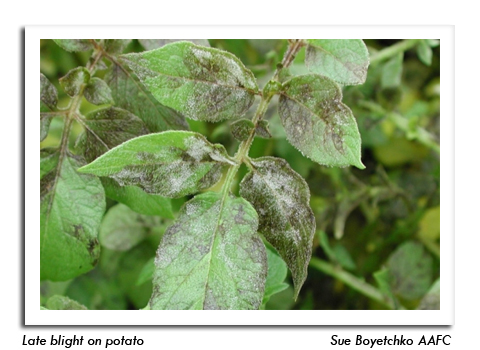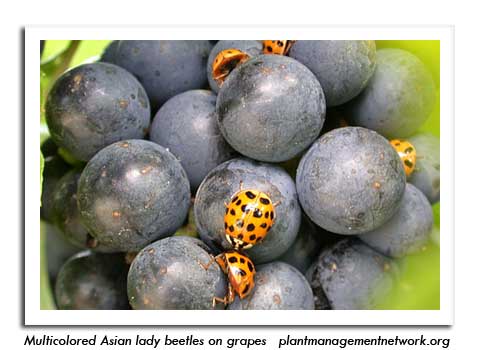
 |
|
|
Looking Ahead
Volume 63 Number 17 Date 08/30/2018 CORN EARWORM - Migrants arrived in high numbers for the third consecutive week. The pheromone traps near Beaver Dam, Mayville and Ripon captured 514-1,093 moths, a significant increase from 101-348 moths recorded last week. The extremely large August 23-29 count of 3,357 moths brings the season's cumulative total to 5,293 moths in 15 monitoring traps, with nearly all (96%) having arrived during the second half of August. Sweet corn growers are advised to maintain corn earworm scouting and management programs as long as moth activity persists and green silks are available for egg laying. LATE BLIGHT - Development of this disease has been confirmed by the UW on commercial potatoes in three counties as of August 30: Adams, Marquette, and Waushara. All samples tested this season have been the US-23 genotype, which can be managed with phenylamide fungicides such as mefenoxam, applied preventatively. Potato and tomato plants that are exhibiting symptoms of late blight cannot be saved and should be disposed of in plastic bags to limit its spread. FALL PESTS - Nuisance insects including the boxelder bug, brown marmorated stink bug, multicolored Asian lady beetle, and western conifer seedbug will begin aggregating on warm southern and western exposures of buildings next month, in advance of their indoor invasion. Exterior insecticide treatments may temporarily deter these insects from entering homes, but exclusion measures such as sealing cracks around windows, doors, siding and other openings are preferred. Insecticides should be only applied by a licensed pest control technician and considered for severe infestations. Fall nuisance insects do not reproduce inside the home or cause structural damage. BROWN MARMORATED STINK BUG - This invasive pest has been collected on survey traps in Dane, Door, Kenosha, Marquette, Racine, and Rock counties this summer, with four Wisconsin apple orchards reporting their first BMSB detections. The August 13 capture near Montello in Marquette County is a new county record. Similar to the multicolored Asian lady beetle and boxelder bug, BMSB clusters on the exteriors of buildings in autumn and overwinters in homes and other structures. Densities in Dane, Rock, Milwaukee, Outagamie, Waukesha, and Winnebago counties are high enough that BMSB has become an urban nuisance, and swarming should be expected this fall. BMSB is likely to reach agricultural pest status in Wisconsin in a matter of years. CORN ROOTWORM - Beetle pressure has been unusually low for the second season in a row. The August survey in 229 cornfields found a state average count of 0.2 beetle per plant, tying 2017 for the lowest population since 1971. Although this summer's low adult rootworm levels indicate a generally lower threat of larval root damage to continuous corn next summer, survey data represent regional populations and not pressure in individual fields. Producers and consultants are advised to sample beetle populations once more by early September to inform next year's rootworm management decisions and/or planting rotation. -- Krista Hamilton, DATCP Entomologist 





|
|
|